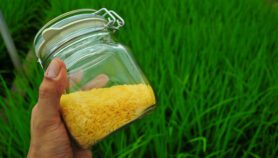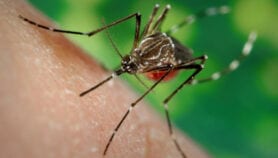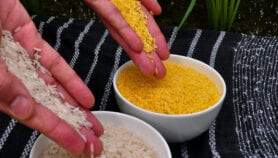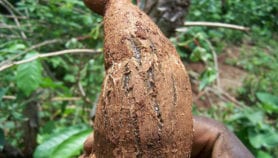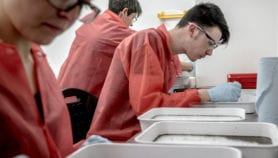By: Wagdy Sawahel
Send to a friend
The details you provide on this page will not be used to send unsolicited email, and will not be sold to a 3rd party. See privacy policy.
A chemical that South American frogs excrete from their skin could protect potatoes and other crops from a range of diseases, according to biotechnologists in Canada.
Researchers at the University of Victoria inserted a modified frog gene into potato plants to make them produce the chemical.
The genetically modified (GM) potatoes showed resistance to infection by a broad range of disease-causing fungi and bacteria, including those responsible for diseases such as dry rot, late blight and pink rot.
Different species of frog produce different sets of chemicals, including some called dermaseptins, from their skin depending on the environment they inhabit. The chemicals help protect frogs from bacteria and other ‘pathogens’.
The most potent dermaseptin, known as B1, has been isolated from the skin of tree frogs called Phyllomedusa bicolor that live in the rainforests of South America, where the hot and humid conditions mean fungi and bacteria thrive.
The Canadian team showed that a synthetic version of dermaseptin B1 inhibited the growth of “an exceptionally broad range” of fungi that cause plant diseases, as well as the bacterium Erwinia carotovora, which causes blackleg in potato plants in the field and soft rot of tubers in storage.
The researchers genetically modified potatoes to produce the chemical and exposed the GM plants to the same organisms. The inserted gene gave “unusually broad-spectrum and powerful resistance to infection”, according to the team’s research, which the journal Theoretical and Applied Genetics published online in June.
Santosh Misra, who led the work, told SciDev.Net the approach could help farmers in developing countries to reduce pesticide use, increase yields and reduce losses of crops stored after harvest.
Fungal and bacterial infections can cause heavy losses of potato crops. The standard approach has, in recent decades, been to spray crops with pesticides, but this can be damaging to the environment and farmers’ health, and encourages the fungi and bacteria to develop pesticide-resistance.
Misra’s team says that because their GM potatoes could resist so many types of disease-causing organism, the same gene could be used to protect other crops such as wheat, barley and sugar.
The researchers say that the preliminary results of studies to show the safety of dermaseptin B1 “are positive”. They add that the GM plants showed no ill effects of having been genetically modified.



